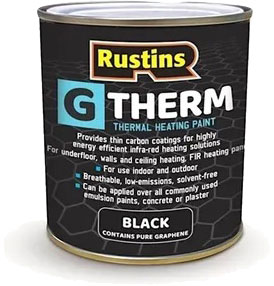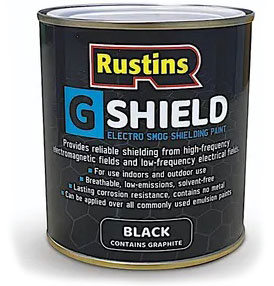Graphene Star, in conjunction with Rustins, produces three innovative paints which utilise the unique properties of graphene. The products are designed to; generate infrared heating, shield from electromagnetic radiation and provide thermal insulation.
An initial collaboration with NPL validated the paints’ electrical conductivity and electromagnetic radiation shielding, which was instrumental in the early stages of bringing these products to market.
Next, Graphene Star wanted to better understand how their products performed in different conditions – including under vacuum, and in different humidities and temperatures – so they could market the product for new applications. These new applications include electromagnetic shielding within mobile phones, electric vehicles and for microwave radiation protection in various environments. Graphene Star approached NPL to help assess the stability of their paints under these conditions.
Graphene Star provided three samples for testing, all containing slightly different levels of graphitic material. Using its new environmental chamber electrical characterisation, NPL measured the electrical transport properties of these samples, and excited them with frequencies from 1-100 kHz, whilst under vacuum, at up to 80% controlled humidity, and at a range of temperatures up to 60oC. From these tests, NPL produced a detailed report and held in-depth discussions with Graphene Star to help them understand the measurements and the stability of their product under different conditions.
The results demonstrated stable performance of the paints in varying environmental conditions including ambient, vacuum, wide-ranging humidities, and high temperatures, showing less than 10% difference in electrical resistance across all conditions. The measurements validate that Graphene Star’s products are fit for use in a wide range of applications, including in mobile phones, and in future could be suited to larger-scale applications such as insulating surfaces or boilers. This opens the opportunity to market Graphene Star’s products to a wide range of industries, and provides the data customers will need to buy with confidence.
The results also verified that the product can be used with any power source (AC or DC) due to the very stable response with a less than 2.3% change in the electrical resistance in a very large range of excitation frequency (1Hz to 100kHz).
NPL’s measurements were fundamental in providing confidence to Graphene Star’s first private equity investors that its products had genuine market potential. As the company has grown, NPL’s measurements have continued to give a recognisable “gold standard” benchmark to investors in a subsequent fundraising round. This has been instrumental in helping the company scale up to meet the requirements of a broader commercial market.
Graphene Star’s production process is notably environmentally friendly and its products are directly aimed at helping customers to reduce their carbon footprint by significantly increasing their energy efficiency. Therefore, NPL’s data has a direct positive impact on the company’s ability to achieve these objectives.
Marina Starkova, CEO, Graphene Star Ltd, says: “Having the NPL data is very useful to our sales and fundraising - it enables us to say that our products have been proven by the highest measurement authority in the land to be very stable in a wide range of environmental conditions. NPL’s name unquestionably inspires confidence in customers and investors.”
Graphene Star is a developer of graphene and graphitic materials with innovative conductivity and electromagnetic shielding properties. In conjunction with Rustins, it has developed commercially available G Shield, G Therm and G Insulate paints which are designed to protect against EMI and provide innovative cost-effective green solutions for heating and reducing greenhouse gas emissions.


